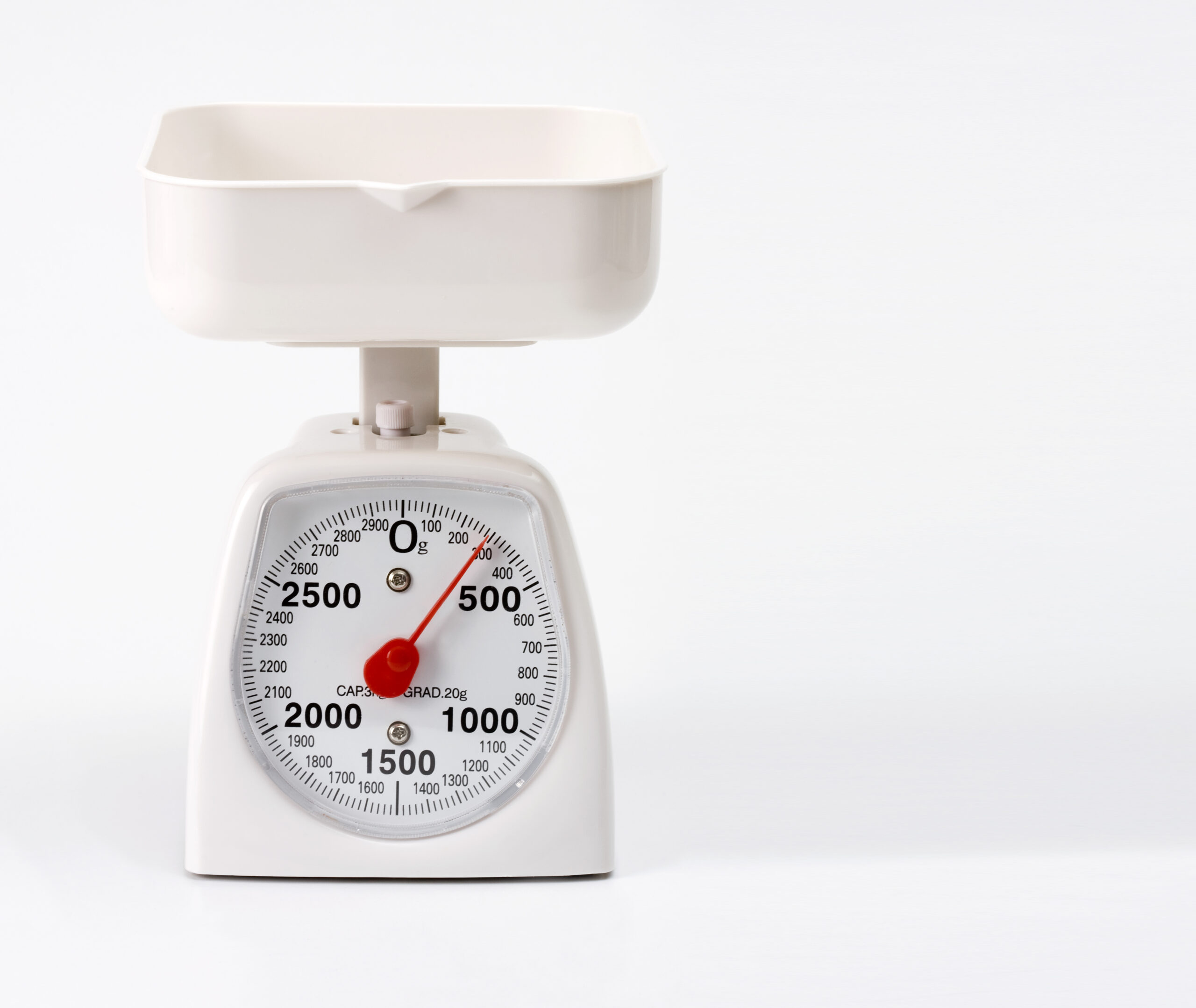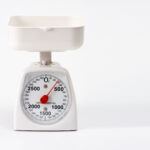Before you measure your ingredients on a kitchen scale, you need to tare the scale. Taring simply means setting the scale to zero.
If you notice, when you place an empty bowl on the scale, it will show the weight of the bowl. But when recipes list ingredient amounts, they don’t include the weight of the bowl or container. It solely includes the weight of the ingredient. That’s why you need to zero the scale out first. If you don’t, you’ll end up using less of the ingredient than you’re supposed to.
Here’s a more detailed guide.
What Does “Tare” Mean on a Kitchen Scale?
Taring means resetting the scale to zero after placing a container or bowl on it. This removes the weight of the container from the final reading. So when you add the actual ingredient, the scale only shows the weight of what you’re measuring—not the bowl.
Almost all digital kitchen scales have a “Tare” or “Zero” button. You press this button after placing your container on the scale. The screen should then read “0 g” or “0 oz” depending on your selected unit.
Why You Need to Tare Before Weighing Ingredients
To Get Accurate Measurements
This is the main reason to use the tare function. If you don’t zero out the container, the scale includes its weight in the final number. That means you’ll end up with more of the ingredient than the recipe calls for. This can make a big difference, especially in baking.
To Avoid Doing Math
Without taring, you have to subtract the weight of the container from the total reading. That’s extra work—and if you forget or do the math wrong, your ingredient amount will be off. Taring does this step for you in one button press.
To Save Time in the Kitchen
Taring speeds things up. You can measure ingredients one after the other without switching bowls. Just tare the scale again before adding the next item. This is especially helpful when making something like cake batter or salad dressing where ingredients go into the same bowl.
How to Tare a Kitchen Scale Step-by-Step
- Make sure the scale is on and the display reads zero.
- Place your empty bowl or container on the scale
- Press the “tare” or “zero” button. The scale will reset the reading to zero.
- Add your ingredient.
- Repeat if needed. If you’re adding a second or third ingredient to the same bowl, just press “Tare” again after each one.
When to Tare the Scale
You should tare the scale any time you’re using a container, plate, or bowl to hold what you’re weighing. This applies to solids, liquids, powders, or anything else you measure.
It’s also useful when:
- Measuring multiple ingredients in the same bowl
- Using different units (grams, ounces, milliliters)
- Baking or cooking with exact quantities
Common Mistakes to Avoid
Forgetting to tare before adding the ingredient. If you forget to press tare, the weight will include the bowl, and you’ll get an incorrect reading.
Taring after adding the ingredient. This zeroes out the weight of the ingredient as well, so the scale shows “0” even when the ingredient is in the bowl. You’ll lose track of how much you’ve added.
Switching containers without re-taring: If you change the bowl or plate, remember to press tare again. Each container has its own weight.
Final Thoughts
Taring a kitchen scale makes a big difference. It ensures your measurements are accurate, saves time, and keeps your kitchen cleaner.
Want a smoother experience in the kitchen? Invest in a kitchen scale with a clear display and easy-to-use tare function. Try the MisterChef Digital Kitchen Scale—designed for fast and accurate weighing with a simple one-touch tare button. Shop with us today.







